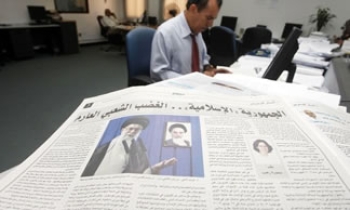A look at Israeli television channels and one can have a fair idea how far Israel lags behind in representing minorities. A regular TV viewer in Israel may never come across an Arab doctor advising on a flu virus, or an Arab lawyer giving tips on labour laws. Thanks to the almost no Arab presence on TV and radio.
A recent study by the Israeli Centre for Strategic Communication has revealed some remarkable facts about the presence of Israeli Arabs in the Hebrew-speaking media in Israel between June 2006 and May 2007.
Approximately one fifth of Israeli population is Arab. Despite constituting a fair percentage in Israeli population, Arabs are low status minority groups. Their representation in the media stands at only 1 per cent. Furthermore, media outlets rarely employ Arabs workers.
Other minority groups too, like immigrants, ultra-orthodox Jews, persons with physical disabilities and even women, rarely find expression in the media, and, when the stage is given to them, they are usually shown in a stereotypical way.
There has recently been some improvement in the representation of the other excluded groups. There is an increased presence of almost 10 per cent with respect to minorities (women, religious). There has been a minuscule change in coverage and of immigrants too. However, Arab presence on television channels has gone down ironically. Arab presence decreased by 33 per cent - from 3 per cent to 2 per cent. The representation of Arabs in radio stations also has failed to cross 1 per cent.
The issue is not only how much “screen time†do the Arab citizen of Israel receive but of what sort? The qualitative aspect of representation is suffering as much as the quantitative part. Chances are rare that one will find an Arab news presenter or, on the eve of elections, an Arab statistician on a Hebrew news channel. Arab experts rarely appear in the media and there is not even one Arab commentator.

A study recently published by the Second Authority for Television and Radio (2006) applied both quantitative and qualitative measures to examine the frequency with which members of minority or marginal social groups appear on the television screen.
The study indicated that from 2004 to 2005, approximately 95 per cent of the people who appeared on the screen were Jewish and only 2 per cent were Arab. Only 3 per cent of those appearing during the news were Arabs, 3 per cent in current affairs programmes and 2 per cent in entertainment programmes. In addition, the study found that Arabs appeared mainly in the context of the Arab-Israeli conflict and crime. Forty-five per cent of the items that dealt with Arabs were security-related, 35 per cent were related to the Palestinian-Israeli conflict, 25 per cent to the conflict between Arabs and Jews in Israel, and 30 per cent to criminal matters.
It was also found that Arabs do not appear at all in items related to economic affairs, business, commerce, industry, labor relations or trade unions. In the majority of the cases, Arabs appear in the media in connection with political and security issues, while, generally speaking, being shown through a prism of threat rather than as ordinary citizens. The number of Arabs who appeared in reports about public disturbances was twice the number of Jews who did.
The research “When Prophesy Always Fails†by Gadi Wolfsfeld, Eli Avraham and Issam Aburiya in 2000, pointed towards a clear trend in the coverage of Arabs in Israel. The reporters and editors covering the Arab population in the Hebrew media sense that there is an expectation of them for a certain type of event to be covered. This situation results in fixed subjects of the Arab population, perceived as “relevant†or “interesting†by the covering reporters.

Arabs have been stereotyped by means of negative characteristics. The word Arab is identified with the conceptualison of a fearsome, violent figure with immense strength and duplicity. Almost 50 per cent of the items presented on major radio stations, Arabs are taken in negative, menacing context.
Reasons for such stereotypical perceptions are many. One of them is the power relationship in the country where Jews are dominant. Another one is simple racism. Moreover, legacy of war and terrorism has created a constant state of fear and contempt that serves as a rationale for bigotry.
Moreover, the latest study found that the large broadcasting channels, Internet sites and major production companies employ a small number of Arabs among staff. For instance, Channel 2 franchises Keshet and Reshet, Israel Radio's three sub-stations, Channel 8, and the Kids' Channel do not have even one Arab employee. Channel 2's News Company employs eight Arab workers, Channel 1 has three Arab reporters, and IDF Radio has two workers whereas Channel 10 has four.









